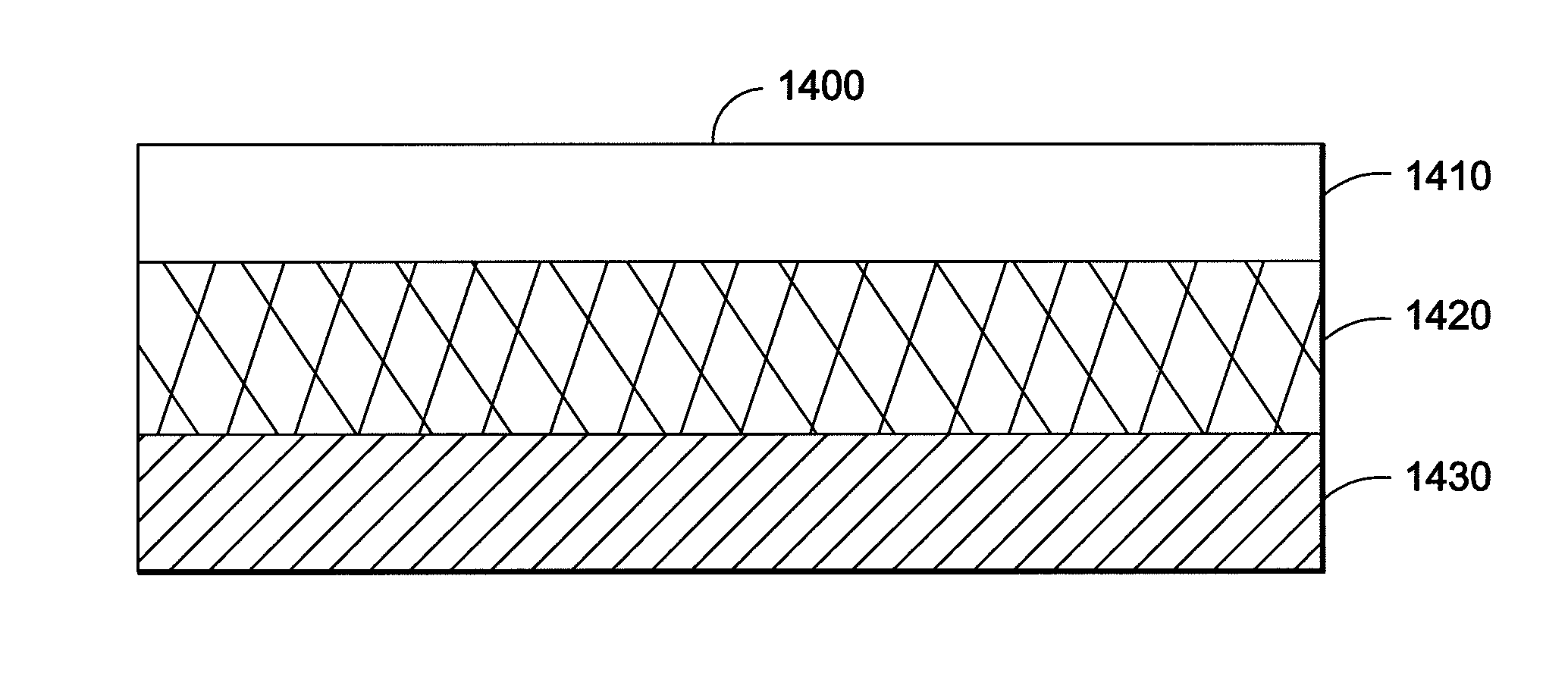Cnt-based signature control material
a technology of signature control and absorbing materials, applied in the direction of shielding materials, localised screening, transportation and packaging, etc., can solve the problems of inherently non-structural nature, prone to wear, chipping, failure, etc., and achieve the effect of dispersing the energy of absorbed radar and reducing radar reflectan
- Summary
- Abstract
- Description
- Claims
- Application Information
AI Technical Summary
Benefits of technology
Problems solved by technology
Method used
Image
Examples
example
[0157]This example shows how a carbon fiber material can be infused with CNTs in a continuous process to enhance signature control capabilities in composite structures.
[0158]In this example, the maximum loading of CNTs on fibers is targeted. 34-700 12 k carbon fiber tow with a tex value of 800 (Grafil Inc., Sacramento, Calif.) is implemented as the carbon fiber substrate. The individual filaments in this carbon fiber tow have a diameter of approximately 7 μm.
[0159]FIG. 12 depicts system 800 for producing CNT-infused fiber in accordance with the illustrative embodiment of the present invention. System 800 includes a carbon fiber material payout and tensioner station 805, sizing removal and fiber spreader station 810, plasma treatment station 815, barrier coating application station 820, air dry station 825, catalyst application station 830, solvent flash-off station 835, CNT-infusion station 840, fiber bundler station 845, and carbon fiber material uptake bobbin 850, interrelated as ...
PUM
| Property | Measurement | Unit |
|---|---|---|
| Percent by mass | aaaaa | aaaaa |
| Percent by mass | aaaaa | aaaaa |
| Density | aaaaa | aaaaa |
Abstract
Description
Claims
Application Information
 Login to View More
Login to View More - R&D
- Intellectual Property
- Life Sciences
- Materials
- Tech Scout
- Unparalleled Data Quality
- Higher Quality Content
- 60% Fewer Hallucinations
Browse by: Latest US Patents, China's latest patents, Technical Efficacy Thesaurus, Application Domain, Technology Topic, Popular Technical Reports.
© 2025 PatSnap. All rights reserved.Legal|Privacy policy|Modern Slavery Act Transparency Statement|Sitemap|About US| Contact US: help@patsnap.com



